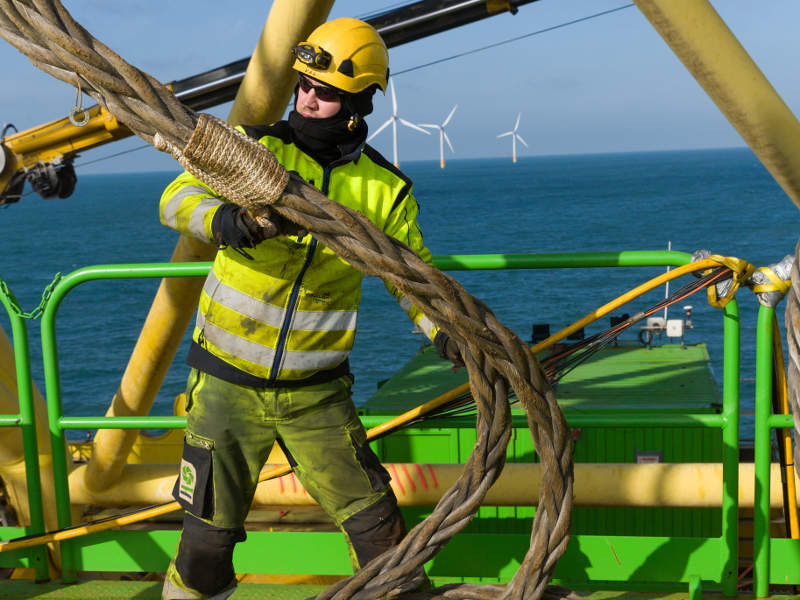The 950MW Moray East offshore wind farm is the first of two offshore wind projects planned to be developed in the Outer Moray Firth, 22km offshore Scotland, UK. The other project planned in the same zone is Moray West.
The Moray East wind farm is being developed by Offshore Windfarm East (MOWEL), which is a joint venture of EDP Renewables (EDPR, 57%), Engie (23%), and Diamond Generating Europe (DGE, 20%).
The development partners signed key financing agreements for the project in November 2018 and hope to achieve financial closure by the end of 2018.
Ground-breaking for the project is anticipated in 2019, while operations are expected to begin in 2022.
Project Gallery
MOWEL was awarded a Contract for Difference (CFD) by the UK Government in September 2017 to supply electricity at a price of £57.50/MWh for a period of 15 years.
The offshore wind farm is expected to generate enough electricity for approximately one million UK households.
Moray offshore wind site details
The UK’s Crown Estate identified Outer Moray Firth as one of the nine potential offshore wind development zones in the UK in 2009.
The EDPR-led joint venture Moray Offshore Renewables (MORL) won the development rights for the Moray Firth zone in the UK Government’s third round of offshore wind licensing in 2009.
Wind speed in the Moray offshore zone is estimated to be 9.75m/s at 90m hub-height.
Moray East offshore wind farm make-up
Planned to be developed over an area of 295km², the Moray offshore wind farm will feature 100 V164-9.5MW offshore wind turbines to be supplied by MHI Vestas.
The turbines will be supported by steel jacket foundations and steel piles. The electricity generated by the turbines will be gathered and transmitted through 66kV inter-array cables to three on-site offshore substations.
Turbine details
Fitted with a 164m-diameter rotor and 80m-long blades, each MHI Vestas V164-9.5MW wind turbine will provide 21,124m² of swept area and generate up to 9.5MW of electricity.
The nacelle of the turbine weighs 390t and measures 20m-long and 8m-wide, while each blade weighs 35t.
The hub and tip heights of the turbine are 105m and 187m, respectively.
Electricity transmission from Moray East
The Moray East wind farm will be connected to the national grid by an 86km-long underground export cable from a new substation at New Deer in Aberdeenshire.
The underground offshore cable will include a 52km segment and a 34km onshore segment.
The Aberdeenshire Council granted planning permission for the grid connection at New Deer in 2014.
Moray East wind project financing
MOWEL signed financial agreements for a £2.1bn ($2.6bn) debt facility and £500m ($636m) of ancillary facilities for the Moray East offshore wind project in November 2018.
The financiers for the project include a syndicate of 16 commercial banks as well as the Danish Export Credit Agency (EKF) and the Japan Bank for International Cooperation (JBIC).
Santander Corporate & Investment Banking provided financial advisory services to EDPR, Engie, and DGE.
Contractors involved with the Moray East wind farm
MHI Vestas Offshore Wind signed an agreement for the supply and installation of 100 V164-9.5MW turbines for the wind farm in August 2018.
Fraserburgh was selected as the operations and maintenance (O&M) port for the project in June 2018.
Siemens was selected as the preferred bidder for the design, supply, construction and installation of an onshore substation, 30km of onshore underground export cable, as well as three offshore substations for the Moray East offshore wind farm in November 2017.
Denmark-based electrical infrastructure provider NKT was selected as the preferred bidder for the supply and installation of offshore export cable systems for the Moray East wind farm in November 2017.
VBMS, a subsidiary of Royal Boskalis, was selected for the supply and installation of inter-array cables for the Moray East wind farm in October 2017.
GeoSea, a subsidiary of Belgium-based geotechnical and offshore engineering company DEME, was selected for the supply and installation of the turbine foundations as well as the foundations for three offshore substation platforms in October 2017.



